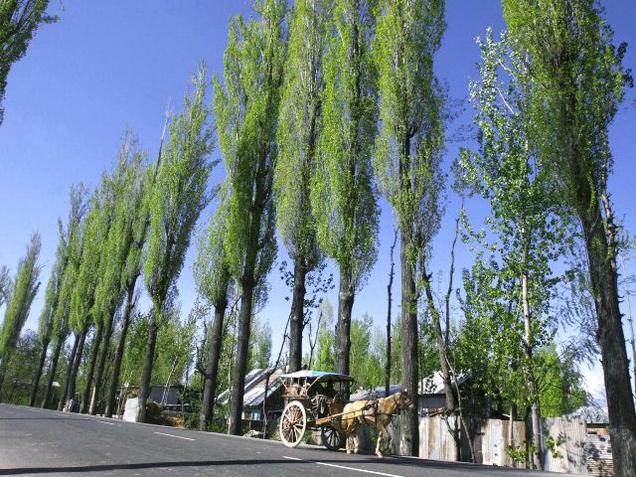JAMMU & KASHMIR :

Srinagar :
Mathematician Fozia Qazi has undertaken a campaign to protect the trees that are in danger of being axed in large numbers in the valley.
With around 16 million poplar trees facing the axe in Kashmir Valley following a High Court order, noted mathematician Fozia S. Qazi has started a campaign to “dispel the myths” that led to the systematic felling of the trees synonymous with the Valley landscape for decades.
In 2014, the Jammu and Kashmir High Court first banned the sale, purchase and plantation of female Russian poplars (Populus deltoides) following a public outcry and medical warnings that their cotton shedding laden with pollen, during late spring was the main cause of allergies in Srinagar.
Chopped down
Thereafter, lakhs of poplar trees were cut down across the Valley. A compliance report submitted to the court by the Deputy Commissioners of Kulgam and Pulwama district in June this year claimed that it targeted felling of six lakh poplars.
Dr. Qazi, Associate Professor of Actuarial Mathematics at Islamic University of Science and Technology, believes that the High Court’s decision to fell poplars is not only an “exceptional exercise but also a misinformed decision.”
Dr. Qazi, who is filing a petition before the court against the felling, has organised a meet of experts to collate scientific data on the subject and create mass awareness.
Backing Dr. Qazi’s contention that poplars are not the main cause of allergy in Kashmir during April and May, Dr. Dr. Naveed Nazir Shah, Consultant and Assistant Professor at the Department of Chest Medicine of the Government Medical College, Srinagar, said: “Poplar-induced allergy stands at number six as a cause of allergy. While dust remains the main cause, it is followed by lawn grass, deodar, kikaarand chinar pollen.
“Also, the size of its cotton is big enough to enter human body. There is no connection to prove that the poplar was the main cause of the allergies.”
Instead of felling the trees, Dr. Sajad Gangoo, an expert from Sher-i-Kashmir Institute of Agricultural Sciences, argues that pruning these trees during autumn would cut down cotton circulation by 80 per cent in spring.
Key to rural economy
Dr. Qazi, a doctorate from the Syracuse University in the U.S., argues that poplar trees are central to rural economy here.
“The tree grows faster [than the local species]. It’s a source of livelihood for many because fruit boxes are made of it,” she pointed out and said that while “it consumes water, purifies it more than any other tree and could be helpful for water bodies too.”
Poplars live up to 40 years and mature in just three years. They attain height up to 20-30 feet.
“Given its height, poplars stand distinctly in the landscape of Kashmir and dot most highways, forming a mesmerising canopy and fast becoming a tourist attraction too,” Ms. Qazi said.
source: http://www.thehindu.com / The Hindu / Home> National> Other States / Peerzada Ashiq / Srinagar – June 24th, 2016








